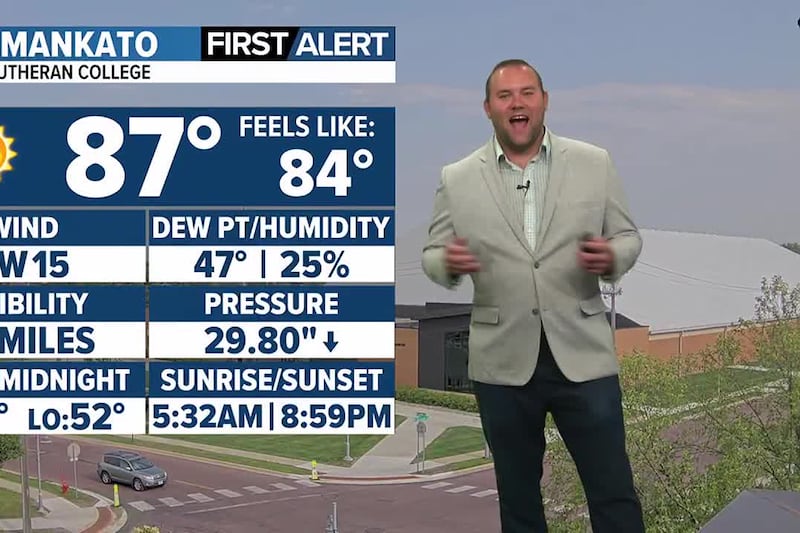## Big Brother is Watching? Mankato Residents Fight Back Against City Surveillance
Imagine walking down the street, unaware that your every move is being recorded. Now, imagine that happening in your entire city. This isn’t the plot of a dystopian sci-fi novel – it’s the reality facing residents of Mankato, Minnesota, where a recent city council meeting erupted in public outcry over the proposed implementation of widespread surveillance technology.

Cost Concerns

The proposed surveillance technology package carried a hefty price tag of approximately $130,000. This expenditure sparked immediate concern among Mankato residents, who questioned the allocation of such a significant sum to surveillance systems when other pressing needs existed within the city. Proponents of the proposal argued that the investment in advanced technology would ultimately enhance public safety and potentially deter crime, thereby justifying the cost.
Opponents, however, countered that these funds could be better utilized to address issues like affordable housing, infrastructure improvements, or support for local businesses. They emphasized the need for a transparent and accountable process for allocating public funds, ensuring that resources are directed towards initiatives that directly benefit the community as a whole.

Privacy Risks
The implementation of AI-powered surveillance technology raised significant concerns regarding potential privacy violations. Critics argued that the use of facial recognition and other advanced AI algorithms could lead to widespread data collection and potential misuse of personal information.

Potential for Misuse
There were fears that the collected data could be accessed by unauthorized individuals or used for discriminatory purposes, potentially targeting specific groups based on race, ethnicity, or political affiliation. The lack of clear guidelines and regulations surrounding the use of such technology further exacerbated these concerns, raising questions about the potential for abuse and the erosion of fundamental privacy rights.

Data Breaches
Another major concern was the vulnerability of the collected data to cyberattacks and data breaches. A successful breach could expose sensitive personal information to malicious actors, leading to identity theft, financial fraud, or other forms of harm.
The potential consequences of such a breach were significant, not only for individuals but also for the city’s reputation and its ability to maintain public trust.

Chilling Effect on Free Speech and Assembly
Opponents of the surveillance proposal also expressed concerns about the potential for a “chilling effect” on free speech and assembly. They argued that the constant presence of surveillance cameras could discourage people from expressing their views openly or participating in public demonstrations, fearing that their activities would be monitored and recorded.
This could ultimately lead to a climate of self-censorship and stifle the free exchange of ideas, which is essential for a healthy democracy.
Balancing Act
The debate surrounding the Mankato surveillance proposal highlighted the ongoing challenges of balancing the need for public safety with the protection of individual privacy in the age of advanced technology.
Supporters of the proposal argued that the use of surveillance technology was crucial for deterring crime, apprehending suspects, and protecting the community from harm. They emphasized the importance of leveraging technology to enhance law enforcement capabilities and create a safer environment for all residents.
Opponents, however, stressed the need for robust safeguards and oversight mechanisms to prevent the abuse of surveillance power and ensure that individual rights are not unduly compromised. They called for transparent and accountable use of technology, with clear guidelines and regulations that protect privacy while still allowing for legitimate law enforcement purposes.
What Passed, What’s Pending, and What’s Next
The contentious city council meeting resulted in a partial approval of the proposed technology upgrades. While some aspects of the proposal were rejected, others were passed, setting the stage for a six-month review and potential future changes.
Partial Approval
Two-thirds of the proposed technology package was ultimately approved by the city council. This included the purchase of 20 Milestone cameras equipped with AI capabilities, but without facial recognition technology or access to national databases. These cameras will primarily focus on identifying vehicle colors, types, and license plates.
Additionally, the council approved the activation of the Axon License Plate Reader system already installed in squad cars. This system will access data from the National Crime Information Center (NCIC) to identify stolen vehicles, felony warrants, and AMBER alerts.
City Manager’s Clarification
City Manager Susan Arntz provided a statement clarifying the limitations of the approved cameras. She emphasized that the Milestone cameras would not be equipped with facial recognition technology, nor would they have access to national databases beyond those required for basic vehicle identification.
This statement aimed to address concerns about privacy violations and reassure the public that the cameras would be used solely for legitimate law enforcement purposes.
The Six-Month Review
The city council agreed to revisit the surveillance technology in six months. During this period, they will evaluate the implementation of the passed technology, assess its effectiveness in enhancing public safety, and consider any feedback or concerns raised by residents.
The outcome of the review will determine whether additional cameras or technologies will be implemented, or if any modifications will be made to the existing system. This six-month review period allows for ongoing dialogue and adjustments, ensuring that the city’s approach to surveillance technology remains responsive to the evolving needs and concerns of the community.
Conclusion
The Mankato City Council meeting was a stark reminder that the advancements in technology, while promising, often tread a fine line between progress and privacy. The proposed expansion of surveillance technology, while touted as a measure to enhance public safety, ignited a firestorm of dissent from concerned citizens. The core arguments revolved around the potential for misuse, the erosion of civil liberties, and a lack of transparency in the implementation process. The community’s passionate pleas underscored the deep-seated anxieties surrounding the erosion of personal freedoms in the name of security. This debate transcends the boundaries of Mankato, echoing a larger national conversation about the ethical implications of ubiquitous surveillance. As technology continues to evolve, integrating itself into every facet of our lives, it’s crucial to have open and honest dialogues about the trade-offs we are willing to make. The question remains: Will we sacrifice our privacy for the perceived safety, or will we find innovative solutions that protect both? The future of our society, its values, and its very sense of freedom, hangs in the balance.
